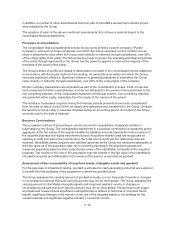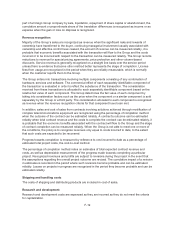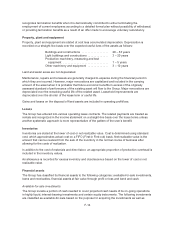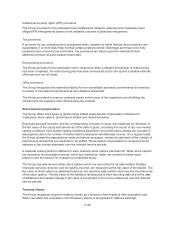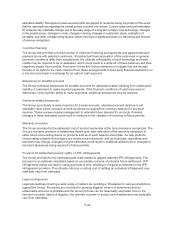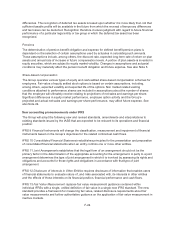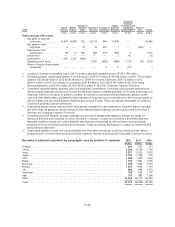Nokia 2012 Annual Report Download - page 219
Download and view the complete annual report
Please find page 219 of the 2012 Nokia annual report below. You can navigate through the pages in the report by either clicking on the pages listed below, or by using the keyword search tool below to find specific information within the annual report.Accumulated changes in fair value from qualifying hedges are released from fair value and other
reserves to profit and loss as adjustments to sales and cost of sales when the hedged cash flow affects
profit and loss. Forecast foreign currency sales and purchases affect profit and loss at various dates up
to approximately 1 year from the balance sheet date.
If the hedged cash flow is no longer expected to occur, all deferred gains or losses are released
immediately to profit and loss as adjustments to sales and cost of sales. If the hedged cash flow
ceases to be highly probable, but is still expected to occur, accumulated gains and losses remain in
equity until the hedged cash flow affects profit and loss.
Cash flow hedges: Hedging of foreign currency risk of highly probable business acquisitions and other
transactions
From time to time the Group hedges the cash flow variability due to foreign currency risk inherent in
highly probable business acquisitions and other future transactions that result in the recognition of non-
financial assets. When those non-financial assets are recognized in the statement of financial position,
the gains and losses previously deferred are transferred from fair value and other reserves and
included in the initial acquisition cost of the asset. The deferred amounts are ultimately recognized in
profit and loss as a result of goodwill assessments in case of business acquisitions and through
depreciation in case of other assets. In order to apply for hedge accounting, the forecast transactions
must be highly probable and the hedges must be highly effective prospectively and retrospectively.
Cash flow hedges: Hedging of cash flow variability on variable rate liabilities
The Group applies cash flow hedge accounting for hedging cash flow variability on certain variable rate
liabilities. The effective portion of the gain or loss relating to interest rate swaps hedging variable rate
borrowings is deferred in fair value and other reserves. The gain or loss related to the ineffective
portion is recognized immediately in profit and loss as financial income and expenses. For hedging
instruments closed before the maturity date of the related liability, hedge accounting will immediately
discontinue from that date onwards, with all the cumulative gains and losses on the hedging
instruments recycled gradually to profit and loss when the hedged variable interest cash flows affect
profit and loss.
Fair value hedges
The Group applies fair value hedge accounting with the objective to reduce the exposure to
fluctuations in the fair value of interest-bearing liabilities due to changes in interest rates and foreign
exchange rates. Changes in the fair value of derivatives designated and qualifying as fair value
hedges, together with any changes in the fair value of the hedged liabilities attributable to the hedged
risk, are recorded in profit and loss in financial income and expenses.
If a hedge no longer meets the criteria for hedge accounting, hedge accounting ceases and any fair
value adjustments made to the carrying amount of the hedged item while the hedge was effective are
amortized to profit and loss based on the effective interest method.
Hedges of net investments in foreign operations
The Group also applies hedge accounting for its foreign currency hedging on net investments.
Qualifying hedges are those properly documented hedges of the foreign exchange rate risk of foreign
currency denominated net investments that are effective both prospectively and retrospectively.
For qualifying foreign exchange forwards, the change in fair value that reflects the change in spot
exchange rates is deferred in translation differences within consolidated shareholder’s equity. The
F-18




